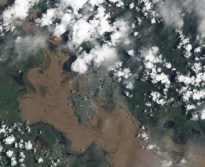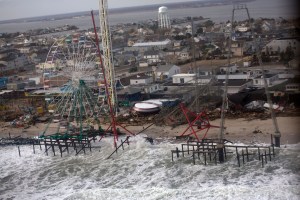DIU challenge takes on algorithms to assess building damage

When responding to a natural disaster, it’s helpful to know the scale of the damage up front.
The Pentagon’s Defense Innovation Unit (DIU) thinks computer vision technology can help deliver this kind of information — and that’s the focus of xView2, a new challenge organized by DIU with partners at NASA, the Federal Emergency Management Agency, the Joint Artificial Intelligence Center and more.
Today, disaster relief efforts use satellite imagery to get a sense of disaster damage, but they do it by hand. And because these disasters can impact a large space, analysts have to contend with “huge swaths of pixel space to localize and score damage in the area of interest,” the challenge’s organizers say. “It is a slow and laborious process.”
Automating this process with the help of technology, they hope, could enable quicker recovery after fires, hurricanes and more.
The challenge will benchmark different algorithms against each other. The algorithms must be able to score buildings in a post-disaster image on a scale of one to four — one meaning no building damage and four meaning that the building is completely destroyed.
xView2 is, as the name suggests, the second xView challenge. The first, which kicked off in March 2018, focused on computer vision object detection. Now, organizers are taking the challenge a step further.
Submissions to xView2 are due by Nov. 22 and DIU plans to announce winners in December.





